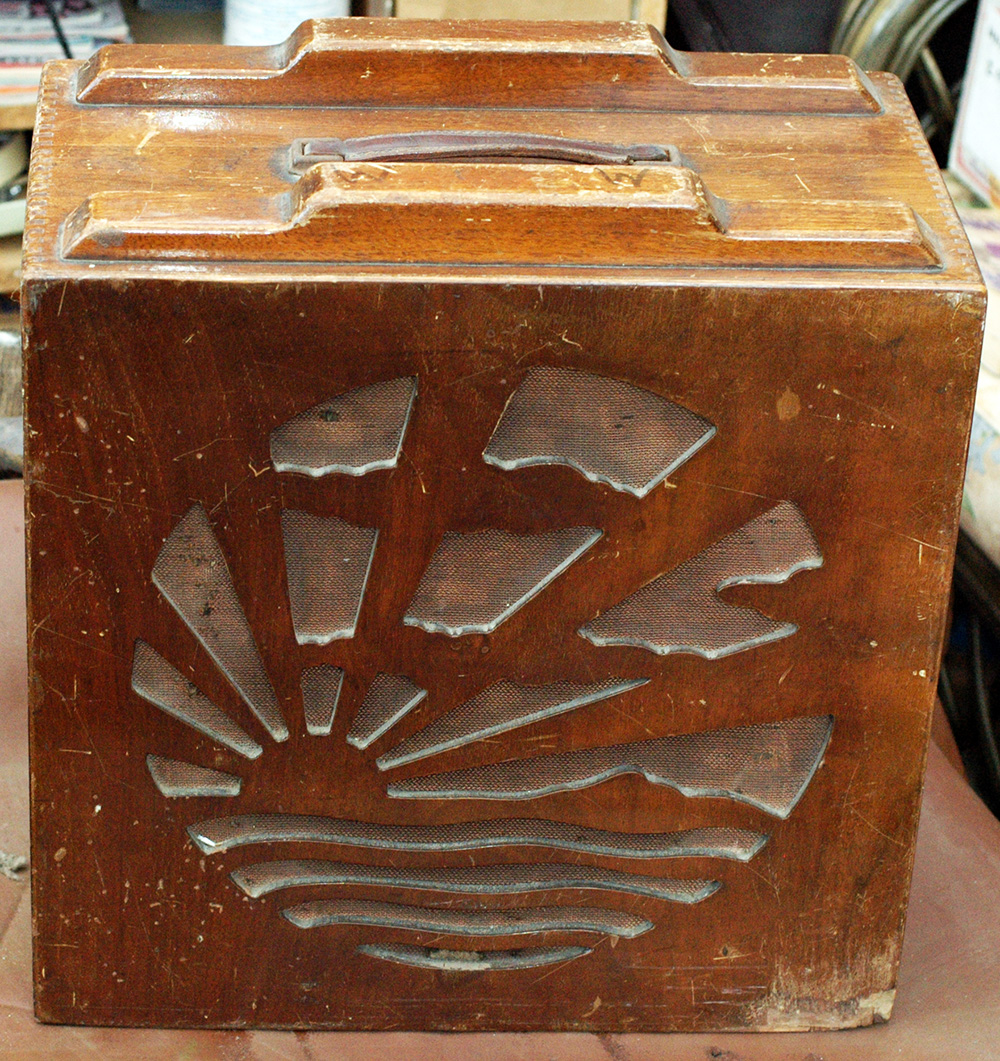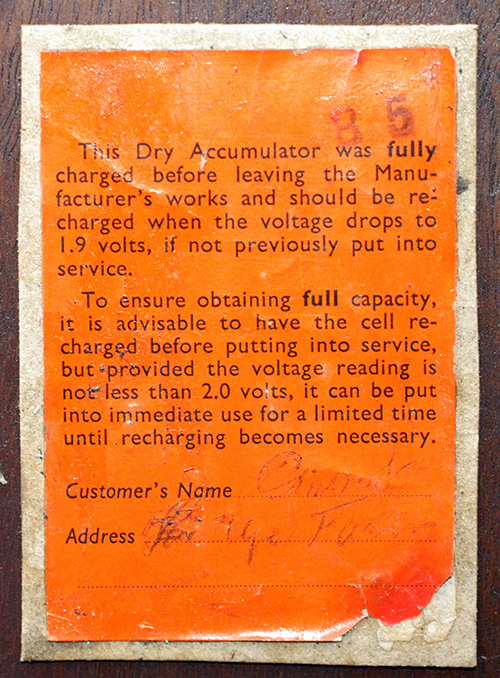|
A very heavy portable
radio from 1932, this set has been partly restored, but the methodology
was a bit off. The previous owner has used modern plastic covered
wiring to replace what was probably perished rubber covered leads.
There's a frame aerial built into the cabinet and there's a rotating
mount under the case so the user can turn the set to get the
best volume or to minimise interference. |
 |
|
Below is a view of the
side of the receiver followed by a close-up of the control panel. |
 |
 |
|
The maker's logo carries the words
"Pye Cambridge England". The set dates from 1932 and
currently has the following four valves from left to right..
RF amplifier Marconi W21 with B4 base
and top cap, Detector Mullard PM2HL in a shouldered glass envelope
and B4 base, AF amplifier another Mullard PM2HL but in a balloon
shaped envelope and a KT2 audio power output with B5 base. Originally
the valves would have been all Mazda types: SG215, HL2, HL2 and
Pen220. |
 |
|
Various labels found on
the set. Right a very detailed blow by blow order about the selling
price of the set. You can see a little
more of this practice by clicking the picture which is linked
to the page dealing with a Defiant receiver.
Below is an interesting label
regarding the set's 2 volt accumulator.
It has the owner's name "Crook"
and the address "....dge Farm"
The usual power requirement
for this set would have been a pair of dry batteries, grid bias
and HT plus a 2 volt accumulator. These would have added several
extra pounds to what is already a heavyweight. |
 |
 |
 |
 |
|
Top.. the Marconi royalty label,
and below this the set's serial number stamped on the chassis.
The letter "P" before the number 1895 indicates that
it's the P version of the Model Q receiver. |
|
|
|
The loudspker currently fitted is
the one shown below. It looks more modern than those fitted to
other receivers I have of this vintage so may have been fitted
by the last owner? |
 |
|
Below is the circuit diagram
for this "P" version of the Pye Model Q. It shows Long
and Medium wavebands, a differential condenser reaction control,
the standard method of volume control by a rheostat in the RF
amplifier filament supply. There's also a trimmer condenser across
the aerial coil for peaking volume.
Click
the circuit to see the Trader Sheet. |
 |









